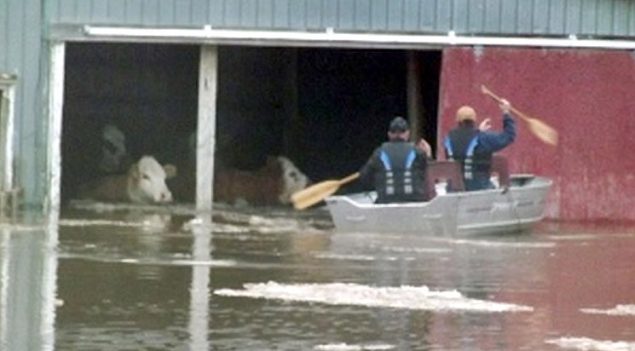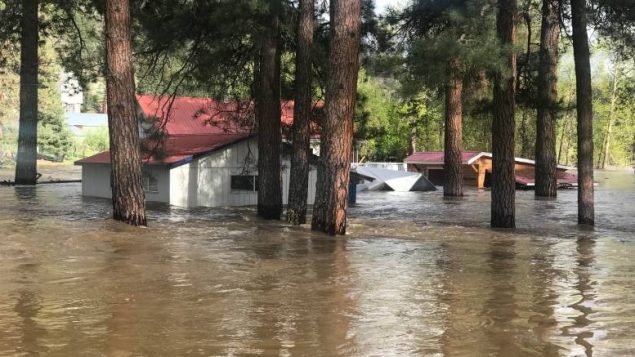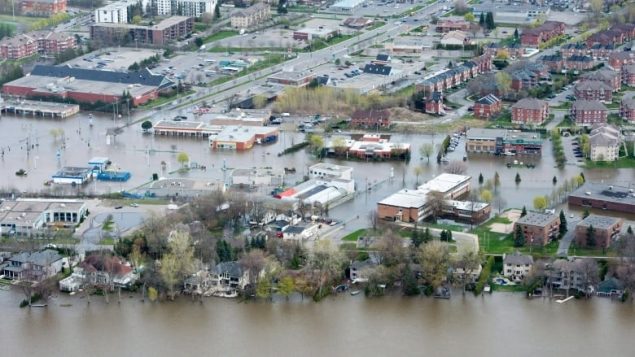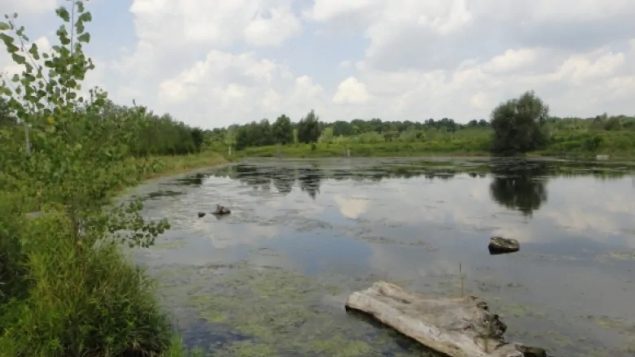Report says “keep the wetlands”.
(Both this article and the subsequent “Counterpoint” have been modified as a result of complaints by Robert Muir (P Eng) to the Radio-Canada Ombudsman regarding inaccuracies in the stories. The ombudsman has ruled in favour of the complainant. Certain statements relating to increased rainfall amounts and the so-called 100 year events deemed by the complainant to be inaccurate or irrelevant to the story have been removed and/or replaced. Information from Environment Canada has been added to indicate their statistics show no increase in rainfall or extreme rain events beyond “normal” variations.
However, a link to the Ontario Society of Professional Engineers and their open letter to the Financial Post in response to the Intact Report have been added. changes to the original story have been made on Jan 29, 2019 to comply with the ombudsman’s decision available HERE As a result of the the decision, the OSPE wrote to the R-C ombudsman and the CBC CEO expressing the Society’s support for the original RCI stories and their clear difference of position from that of their member, Mr. Muir. The Insurance Bureau of Canada has also written to the ombudsman describing limitations to the Environment Canada data and supporting the Intact study and original story, Those letters have been rejected by the R-C ombudsman.
In addition and as complete contradiction to the ombudsman decision, in later responding to simple direct questions, the ECCC Senior Research Scientist wrote the following in an email on Nov 30, 2020. To a question “Has precipitation increased in Canada”
“Precipitation has increased for Canada as a whole since 1948 and for southern Canada since the early 1900s.”
In response to a question about the limited number and wide spacing of ECCC rain gauges.- Can they entirely miss certain rainfall events, storms?
“Storms occur anywhere and the number of rain gauges we have in Canada is limited. This means that certain storms will not be captured in our gauge network”
A recent study by the Intact Centre at the University of Waterloo in Ontario contends that an increase in rainfall due to climate change combined with a number of other factors, has resulted in a significant increase in insurance damage claims.
Although in recent years the news has been full of stories of bigger and more violent storms, and massive rainfall and flooding, there is nothing to prove that this type of precipitation event has been on the rise in Canada. Data compiled by Environment Canada since the 1950s show that there has been no significant change in their frequency.”.
Senior Research Scientist Environment Canada Xuebin Zhang agrees that as the Earth warms it will increase extreme events, “As hot temperature extremes and extreme precipitation have increased globally, it is reasonable to expect the 100-year extreme hot temperature or 100-year extreme precipitation events to have become more frequent”. However, as noted above there is no statistical evidence that annual rainfall amount has increased as he states or that of extreme rainfall events to date, “For Canada as a whole, observational evidence of changes in extreme precipitation is lacking”.
Blair Feltmate (PhD), is head of the Intact Centre on Climate Adaptation at the University of Waterloo, in Ontario, lead investigator for the Intact Centre study.
ListenThe Intact Centre and the International Institute for Sustainable Development collaborated on the study for the IBC. The Insurance Bureau of Canada (IBC) says payouts by its members for natural disasters like floods, have more than doubled every five years since the 1980’s.

Blair Feltmate (PhD) Intact Centre on Climate Adaptation, U Waterloo (supplied)
As costs mount to deal with the huge financial burden and loss due to floods, governments in Canada are beginning to shift more financial burden onto insurers and to homeowners.

Flooding in New Brunswick in May this year.: Four cows had to be rescued from a flooded barn near the .Meduxnekeag River, just one of many rivers in the province that have risen over their banks (photo-courtesy Tammy MacLean)
Craig Stewart, Vice-President, Federal Affairs, IBC says. “Coastal and inland flood risk is rising across the country as a result of extreme weather events driven by climate change. Insurance companies are on the front lines of helping Canadians cope with the impacts of the changing climate, paying out over $1.5 billion in the last 12 months alone”.
In addition, for every dollar paid by insurers, governments through taxpayers are paying three to four times that much.

May 2018: Flooding in the north of Rock Creek in the Boundary region of the B.C. Interior. Photo: Brady Strachan-CBC
The report says one of the most cost effective ways to limit property and infrastructure damage is to preserve environments such as wetlands, by leaving them as they are.

May 8, 2017: Flooding of Pierrefonds, Qc near Montreal; The IBC says flood damage costs have risen dramatically in recent years due to climate change. (Paul Chiasson- CP)
“Natural infrastructure, such as an inland or coastal wetland, is not mere decoration – it limits flood risk and the downstream discharge of pollutants, while at the same time supporting biodiversity. In response, every attempt should be made to retain and restore natural infrastructure today, if we are to avoid unconscionable economic, social and environmental losses tomorrow.” Dr. Blair Feltmate, Head, Intact Centre on Climate Adaptation
He says that in southern portions of Canada on average over 60 per cent of natural wetlands, ponds, marshes, streams, and creeks have been altered or removed.

Wetland such as this in the Rouge Valley near Toronto must be preserved in spite of heavy development pressure, in order to mitigate flood damage. It also helps to sequester CO2, and provide a haven for wildlife. (Rouge Valley)
The report indicates that maintaining this natural “infrastructure” could reduce flood damage during a major storm by 29 to 38 per cent.
Note that the Ontario Society of Professional Engineers in an open letter to the Financial Post newspaper of Oct 17. 2018, stated that “in our collective report Weathering the Storms: Municipalities Plead for Stormwater Infrastructure Funding, that a “blanket” approach cannot be used province-wide to plan, sustain or repair municipal assets such as stormwater infrastructure. The strategic implementation of green infrastructure requires a holistic view of not only watersheds but the complex existing urban infrastructure systems within them”.
Beyond the cost factor, the Intact Centre report notes that preserving such natural areas in or near cities is important for biodiversity, not to mention the added aesthetic benefits of keeping natural environments in those areas and creation of recreational opportunities.
The report says as much as possible, the natural infrastructure should be preserved as is, and where possible, landscape returned back to its natural state.
Additional information







For reasons beyond our control, and for an undetermined period of time, our comment section is now closed. However, our social networks remain open to your contributions.